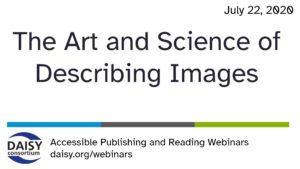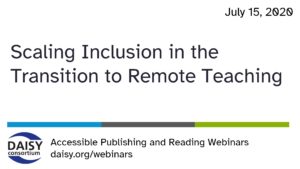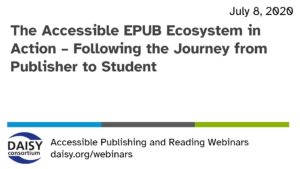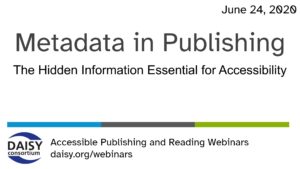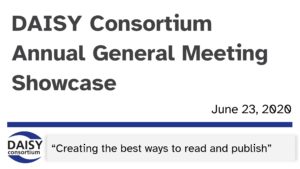Articles archive
In our series of free weekly webinars December 2nd saw a session focused on image description: part two in the series entitled,…
In our series of free weekly webinars July 29th saw a detailed session focused on our new groundbreaking tool, WordToEPUB, following on…
In our series of free webinars July 22nd saw a session focused on the skill of writing image descriptions giving us an…
In our series of free weekly webinars July 15th saw a session exploring how the rapid adoption of remote learning can…
In our series of free weekly webinars July 8th saw a session about the journey accessible EPUB publications take to ultimately…
In our series of free weekly webinars July 1st saw a session focused on activities taking place globally to promote inclusive…
A component of the 2020 DAISY AGM was a showcase presentation highlighting some of the work being conducted, and the…
In our series of free weekly webinars June 17th saw a session focused on the process of authoring quality image descriptions…
Introduction At Dedicon, we strive to make information accessible to people with reading disabilities. Our roadmap aims to deliver a…



